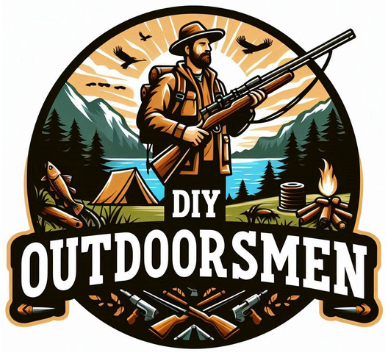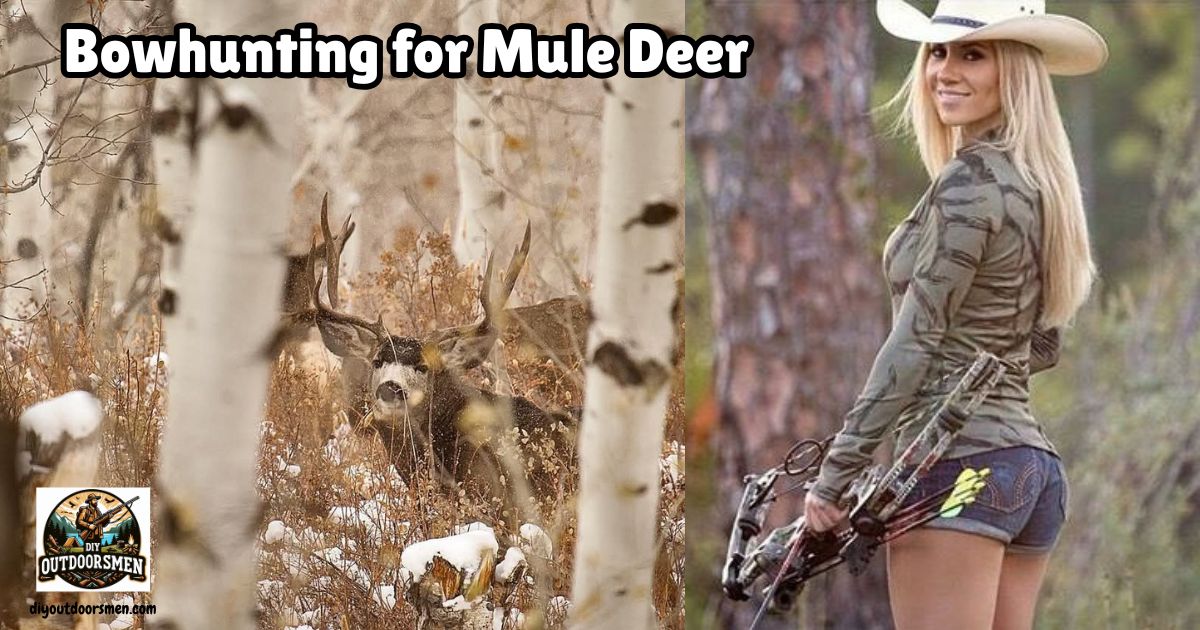Contents
Bow Hunting for Mule Deer offers unique challenges and memorable experiences, particularly for those who savor time in the wild landscapes of the western United States and Canada. In my experience, careful planning has a huge impact on hunting success because mule deer are alert, adaptable, and live in some truly rugged country.
QUICK LOOK: Tips for Hunting Mule Deer with a Bow
- Glassing From Vantage Points: I spend hours behind optics, checking meadows, sunny hillsides, and hidden timber edges. Whether it’s summer in the high country or the late season in the low sage, good glassing is critical. I’ve learned it’s often about finding a deer’s parts—like the flick of an ear, a hint of leg, or antler tips—rather than the full animal.
- Spot and Stalk: After locating a buck, I plan my move, taking advantage of ridges, brush, or drainages as cover. Scent is crucial, so I always check the wind before moving. I approach the deer from below when possible, staying low and patient. My goal is to close the gap to my personal bow range, usually 35–40 yards, close enough for a reliable shot but with some wiggle room if the deer shifts or stands up.
- Ambushing Water Sources: Especially in early season or in dry places, mule deer are drawn to waterholes or seeps. Setting up a ground blind near an active source gives a good shot at close encounters, but I never overhunt one spot since smart deer catch on fast.
- Hunting During the Rut: When bucks are chasing does during the rut, they’re more active and less careful. I look for places with lots of does and often spot bucks out and about during the day, even where pressure is high. Sometimes rattling antlers or using decoys gets results, but usually observation and patience are my winning play.
- Patience: Spot–and–stalk hunting takes real patience and grit. Sometimes you spend half a day sneaking in, then back out if the shot isn’t right. It pays to pass on marginal shots rather than risk a bad outcome or a wounded animal.
Knowing about habitat, gear, and smart technique is crucial if you want to crank up your odds. If you’re looking to pursue mule deer with a bow, this guide will walk you through important steps, gear, and strategies based on what I’ve learned and current hunting practices. Time to get into what makes mule deer bow hunting both tough and rewarding!
Getting Started With Bow Hunting for Mule Deer
Before heading into mule deer country, it pays off to plan well. Mule deer thrive in a variety of habitats, from high mountain basins and desert regions to sagebrush flats and thick forests. I always start my process by researching the area I’ll hunt in, digging into deer habits, food sources, and terrain features that offer concealment for both deer and the hunter.
Scouting ahead of time—either with boots on the ground or using digital mapping apps like onX Hunt or HuntStand—helps me find likely deer hotspots and check for boundaries between public and private land. Mule deer tend to bed in secluded, shady spots during daylight hours, heading out to feed at first and last light.
Knowing these movement patterns is key to a productive hunt. You’ll also want to know the required permits and tag systems for your chosen location, since most states use lotteries or preference points to manage hunting pressure and opportunities.
Essential Gear and Preparation
The right equipment, along with confidence in using it, can really make or break your mule deer hunt. Tough terrain and unpredictable weather put gear to the test, so here’s what I focus on for every trip:
- Bow and Arrows: A compound bow with at least 50 pounds of draw weight is my base. Mule deer are larger than many other species, and that power helps ensure deep, ethical shots. Arrows matched to my bow and sharp broadheads designed for serious penetration are a must.
- Optics: Glassing is a huge part of finding mule deer. I lean on good binoculars and a solid spotting scope, always with a steady tripod. This setup makes it easier to find deer far away without letting them know I’m around. With sharp optics, I can catch antler tips or an ear above the brush, even when the deer is well hidden.
- Mapping Apps and GPS: Digital mapping tools, like onX Hunt, help me mark property boundaries, find water, and track favorite glassing sites. These apps make it easy to plan stalks and stay legal and organized in the field.
- Rangefinder: Uneven terrain throws off distance estimates, especially in steep country. My rangefinder helps me know precise shot distances and get my aim just right.
- Clothing: I pack quiet, layered, and breathable clothes in natural tones or camo that help me blend in. Since mule deer see well, moving softly and blending into the surroundings is important for getting close with a bow.
I practice shooting from all sorts of realistic hunting positions, like kneeling or crouched on a slope, and out to various distances. This makes shooting under pressure second nature when the moment arrives.
Key Tactics for Success
Mule deer respond in different ways to hunting pressure and environmental changes, so rolling with what you find in the field is part of the challenge. Here are the core strategies I rely on season after season:
- Glassing From Vantage Points: I spend hours behind optics, checking meadows, sunny hillsides, and hidden timber edges. Whether it’s summer in the high country or the late season in the low sage, good glassing is critical. I’ve learned it’s often about finding a deer’s parts—like the flick of an ear, a hint of leg, or antler tips—rather than the full animal.
- Spot and Stalk: After locating a buck, I plan my move, taking advantage of ridges, brush, or drainages as cover. Scent is crucial, so I always check the wind before moving. I approach the deer from below when possible, staying low and patient. My goal is to close the gap to my personal bow range, usually 35–40 yards, close enough for a reliable shot but with some wiggle room if the deer shifts or stands up.
- Ambushing Water Sources: Especially in early season or in dry places, mule deer are drawn to waterholes or seeps. Setting up a ground blind near an active source gives a good shot at close encounters, but I never overhunt one spot since smart deer catch on fast.
- Hunting During the Rut: When bucks are chasing does during the rut, they’re more active and less careful. I look for places with lots of does and often spot bucks out and about during the day, even where pressure is high. Sometimes rattling antlers or using decoys gets results, but usually observation and patience are my winning play.
- Patience: Spot–and–stalk hunting takes real patience and grit. Sometimes you spend half a day sneaking in, then back out if the shot isn’t right. It pays to pass on marginal shots rather than risk a bad outcome or a wounded animal.
Best Times and Places to Bow Hunt Mule Deer
The time of year and choice of state can make or break your next adventure. Here’s when and where I’ve found the best luck:
- Early Season (Late August–Early September): Bucks are often together in small bachelor groups, following summertime feeding routes. Their velvet antlers and summer coats make them stand out against green hills. High–alpine spots in Colorado and Utah shine in this window.
- The Rut (Mid–November to Early December): Bucks wander more as they search for does and sometimes give up their usually cautious ways. I target hot spots for does to catch bucks moving even after sunrise.
- Pre–Rut (Late October–Early November): Bucks move from their feeding areas toward places where does gather, producing more activity through the day and more chances to spot–stalk. Natural funnels and travel corridors are prime spots then.
Top states I keep on my list for mule deer bow hunting:
- Colorado: The state has a large population and plenty of public land. Most units require a draw, but a few offer over–the–counter tags for archery.
- Arizona: You’ll find both draw and OTC archery tags here. The Arizona Strip is legendary, but most hunting happens in the state’s deserts and mountains during the January or August/September bow seasons.
- Idaho: OTC bow tags are popular, so they can sell out quickly. The state’s mountains, river breaks, and open spaces challenge and reward every bowhunter.
- Utah and Nevada: These states have controlled drawings leading to awesome trophies, but advance planning is key if you want a chance at these hunts.
Overcoming Common Challenges in Mule Deer Bow Hunting
Every hunt brings its own set of bumps in the road; here are the usual suspects and my best ways of overcoming them:
- Rough Country and Tough Walks: Expect long hikes, steep climbs, and the need to keep up your energy all day. I get in shape by hiking before the season (with my pack), doing cardio, and practicing with gear so the tough stuff doesn’t catch me by surprise.
- Staying Unnoticed: Since mule deer can see and smell so well, using the wind, moving quietly, and always avoiding skylining are habits I swear by. Natural cover is your friend, and slow, intentional movement gets you closer.
- Changing Weather: I always pack a light, waterproof rain jacket and some backup layers. The mountains can switch up fast from warm to cold or sunny to stormy, so a little advance prep keeps me dry and safe.
- Shot Angles and Range: Shooting accurately from steep, uneven ground takes a lot of practice. I put targets on hillsides and shoot sitting, kneeling, and from awkward angles to be ready for anything in real hunting situations.
Mule Deer Bow Hunting – Frequently Asked Questions
Thinking about a mule deer bow hunt? Here are some of the questions I get most often—and some answers based on my own experience:
What draw weight is best for mule deer bow hunting?
I suggest at least 50 pounds, but some hunters choose even more. You need enough punch for consistent, ethical kills on big–bodied bucks—don’t shy away from tuning up your setup for extra power.
How do I get a mule deer bow hunting tag?
Across much of the West, states operate on a lottery or preference point system. Plan and apply early for the best odds. In states like Idaho or Arizona, some OTC tags are available, but they can sell out really fast. Check each state’s rules before your hunt so you don’t get caught off guard.
What’s the average shot distance in mule deer bow hunting?
Open terrain often means shot distances of 30 to 60 yards. I practice regularly at 40 to 60 yards, so I feel ready, but I always shoot closer if I can arrange it for a more controlled shot.
Is a guided hunt or a DIY hunt better for beginners?
Each option has its perks. I started DIY, which saved a lot of money and helped me learn fast, but guided hunts give access to private land and expert help. For your first hunt, it depends—think about whether you want to handle planning and scouting solo or jump in with some pro support.
Final Thoughts on Bow Hunting Mule Deer
Bow hunting mule deer is all about patience, skill, and adapting to wild places. Spotting, stalking, and harvesting a deer with just archery equipment is an adventure you’ll remember for years. Smart research, respectful and ethical practices, and enjoying the process will help keep this great experience alive for everyone. Whether you punch your tag or simply get a feel for the areas mule deer call home, there’s always something to learn and another story to tell when the season wraps up.
Most Recent Articles:
- Bow Hunting For Mule Deer
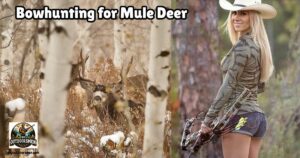
- Best Public Land Mule Deer Hunting
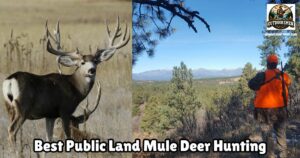
- Drone-Based Scouting Services For Mule Deer
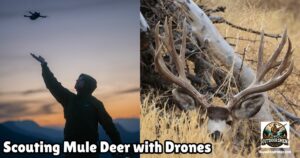
- Late Season Mule Deer Hunting Tips
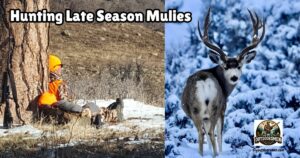
- 8 Tips for Dealing with Hunting Pressure While Mule Deer Hunting
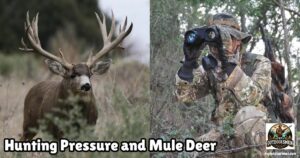
- TideWe Portable Hunting Blinds
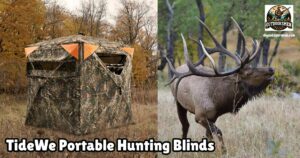
As always, stay safe, enjoy the journey, and please try to leave it cleaner than you found it. If you have any comments, questions, ideas, or suggestions, please leave them in the comment section below, and I’ll get back to you ASAP. You can follow us on YouTube: Man Art Creations for videos of our DIY Adventures.
P.S. Thanks so much for checking out our blog; we really appreciate it. Just so you know, we may receive a commission if you click on some of the links that appear on our site. This helps us keep our content free and up-to-date for everyone. We appreciate your support!
